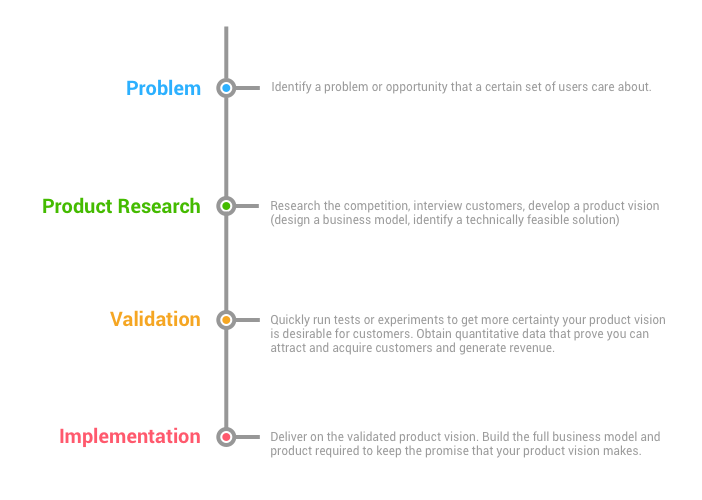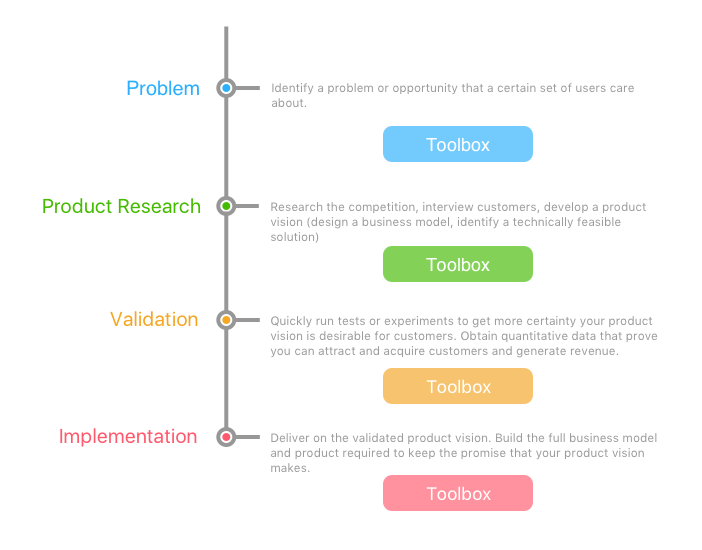Learning product management is a multi-step process. There are several steps to:
Learn the theory (tools, best practices, and methodology) of product management
Apply the theory and skills you have learned to a real-life context
Work as a product manager and learn by evaluating your successes and failures
Learn product management theory
There are a number of resources you can use to learn the theory of product management.
Books
Blogs
Podcasts
Online courses (including this one!)
Applying the theory
Completing the projects within the Product Management path on OpenClassrooms will be an excellent way for you to apply the skills that you will learn in each of these courses.
Working on a real-life product
Reading books about medicine does not make you a doctor. Typically, doctors and surgeons spend years in a role where they practice medicine in a supervised environment. This is due to the fact that no two patients are identical. Context plays an important role and this is learned through intentional practice.
The best way to begin using your product management skills in a real-world environment is to be clear about your desired outcome and to follow a "sequence and toolbox" approach to diagnosing the necessary steps and actions to achieve that outcome.
The product development sequence
The product development sequence that dictates the process for building a product is as follows:
Identify a problem and a set of potential users who have this same problem
Conduct product research to learn more about the intricacies of the problem, as well as the solutions that already exist today and how they might be better implemented
Validate a potential solution through carefully designed experiments and obtain data of the solution achieving traction on a small scale.
Implement a full solution while working with the tech team to build the right set of features that delight customers
This sequence is important to respect because doing the activities in any given step without successfully completing the previous steps will reduce your chances of building a product that customers love. ❤️
Let's examine why. This is to say that building a full solution to a problem (step 4) can only be justified if the solution has been validated (step 3). This validation is only necessary if the research reveals that customers really want the product, and also that no competitor has an identical product (step 2). This research is only worth doing if your instincts tell you that your target users have a problem that is not currently being solved (step 1).
It is acceptable to decide not to proceed with all of the steps. Having done the product research, if you discover your idea has already been done by someone else, then it is probably time to choose another problem to solve. If your research indicates a gap in the market but you also find that the cost of acquiring customers is too high to make a profit during your validation step (step 3), you probably won't want to spend the next couple of years building out the full product.
If a product manager joins a notably profitable company that has mature products, they don't need to worry about steps 1-3. Any product that is profitable and has significant market share can be considered validated. The implementation of the product (step 4) is the major area of concern in this case.
If a product manager joins a company that hasn't written a single line of code yet, the best approach is to initially make sure that the problem is clear to everyone on the team, and after that, the product manager should judge whether or not the product research has been done sufficiently. If not, then they will ensure the product research is done and a valid technical solution is agreed upon before the engineering team starts building the full product.

The Sequence & Toolbox approach
Context is really important when building a product. When you stop working on one product and begin working on another, it is likely that you are solving a different problem for a different set of users. The product management approach for a B2C (business-to-customer) product is different from the product management approach for a B2B product (business-to-business). Different products have different business models (for example, Evernote has a freemium business model, while Facebook has an advertising business model).
The best approach to choosing which product management theory and models to apply is:
Make sure you are building the product according to the Product Development Sequence.
Follow each step in the sequence. Realize that all of the models, building blocks and theory you have learned is like a toolbox. Each step has its own toolbox. Based on your knowledge of this particular context, you will choose which tool will help you to gain more clarity and certainty to make good product decisions.
Evaluate progress of using your chosen tools and methodologies and assess whether any failure could have been prevented if you had taken a different approach.

The advantage to this approach is that whichever step the product manager finds themselves at, they can access a toolbox of potential models and frameworks that can be applied specifically to that step. The choice of tool is based on the context of the problem, business domain, and customer segment.
